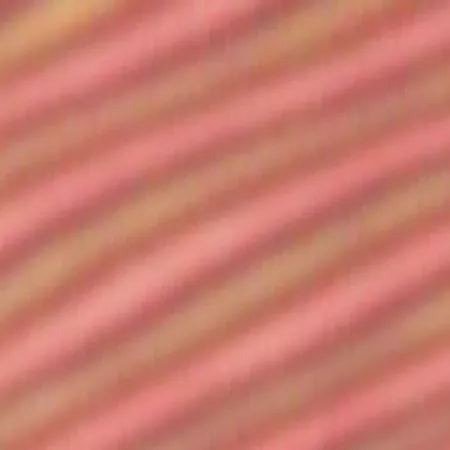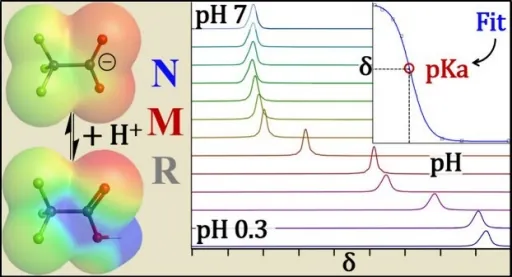
Scientists Unveil a Mesmerizing 'Time Crystal'—Not for Time Travel, But Game-Changing Uses Await!
2025-09-05
Author: Jia
Imagine a clock that runs eternally without electricity, its hands spinning forever. This is the essence of a new breakthrough by physicists at CU Boulder, who have ingeniously crafted a visible 'time crystal.' This remarkable phase of matter keeps its components—atoms and particles—perpetually in motion!
Unlike previous theoretical models, this creation is the first of its kind that can be observed with the naked eye, propelling it into realms of exciting technological possibilities.
"They can be directly seen under a microscope and, under certain conditions, even with the naked eye," stated Hanqing Zhao, the study's lead author and a graduate student in the Department of Physics. This groundbreaking research was published on September 4 in the prestigious 'Nature Materials' journal.
In their experiment, the team developed glass cells filled with liquid crystals—rod-shaped molecules that possess both solid and liquid characteristics. When illuminated, these crystals begin to swirl rhythmically, much like an infinite dance, strikingly reminiscent of that immortal clock.
"Everything is born out of nothing," said Ivan Smalyukh, a professor and co-author of the study. "You just shine a light, and these fascinating time crystals come to life!"
Time Crystals: A Concept Out of Sci-Fi
Though they sound like the stuff of science fiction, time crystals find their roots in the structure of traditional crystals like diamonds and salt. The concept was first proposed in 2012 by Nobel Laureate Frank Wilczek, who envisioned a crystalline structure that organizes itself not in space but across dimensions of time. In this hypothetical state, the particles would continuously evolve and segue through an endless cycle, akin to a GIF stuck on loop.
Though initial attempts were unsuccessful, recent years have seen real advancements, including a 2021 experiment where physicists used Google’s Sycamore quantum computer to create networked atoms that exhibited repetitive fluctuations.
Ingenious Technique with Liquid Crystals
In this recent experiment, Zhao and Smalyukh aimed to mimic that groundbreaking work using liquid crystals. By manipulating these molecules, they could compact them to form 'kinks' that behave like particles, interacting dynamically within the crystal lattice.
Their method involved enclosing a solution of liquid crystals between two sheets of specially coated glass. When exposed to particular light, the dye molecules shifted, compressing the liquid crystals and generating thousands of new kinks that began to dance and interact in remarkably complex ways.
"Imagine a ballroom full of dancers choreographing an intricate waltz!" Smalyukh compared. Even temperature fluctuations couldn’t disrupt the rhythm.
Potential Game-Changing Applications
Zhao and Smalyukh are buzzing with potential applications for these mesmerizing time crystals. One exciting prospect? Integrating them into currency to create effective anti-counterfeiting measures. Shine a light on a $100 bill, and you could reveal a unique, intricate pattern as proof of its authenticity!
Furthermore, by layering different time crystals, the researchers foresee the ability to store vast amounts of data, paving the way for a new era in digital storage.
As Smalyukh declared, "We don’t want to limit the possibilities right now. There’s immense potential to drive this technology in countless directions!" This innovative leap may not power a time machine, but it certainly opens doors to a myriad of futuristic applications.


 Brasil (PT)
Brasil (PT)
 Canada (EN)
Canada (EN)
 Chile (ES)
Chile (ES)
 Česko (CS)
Česko (CS)
 대한민국 (KO)
대한민국 (KO)
 España (ES)
España (ES)
 France (FR)
France (FR)
 Hong Kong (EN)
Hong Kong (EN)
 Italia (IT)
Italia (IT)
 日本 (JA)
日本 (JA)
 Magyarország (HU)
Magyarország (HU)
 Norge (NO)
Norge (NO)
 Polska (PL)
Polska (PL)
 Schweiz (DE)
Schweiz (DE)
 Singapore (EN)
Singapore (EN)
 Sverige (SV)
Sverige (SV)
 Suomi (FI)
Suomi (FI)
 Türkiye (TR)
Türkiye (TR)
 الإمارات العربية المتحدة (AR)
الإمارات العربية المتحدة (AR)